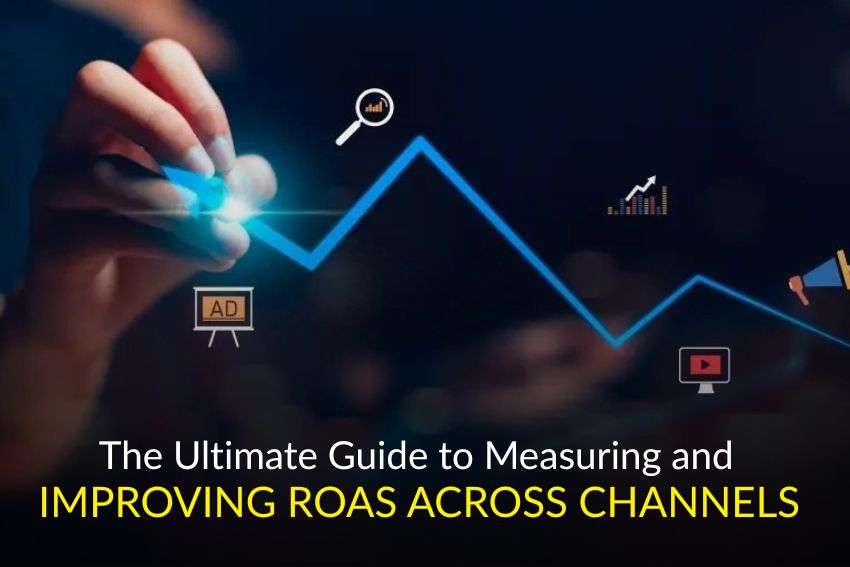
Return on Ad Spend, or ROAS, has become one of the most essential metrics for marketers today. Whether you’re running a small e-commerce store or managing a large digital campaign across multiple platforms, knowing how well your advertising dollars perform is non-negotiable. But understanding ROAS isn’t just about calculating a simple ratio—it’s about uncovering where your marketing is actually driving results and how to make every channel work harder for your bottom line.
What Is ROAS and Why It Matters
ROAS stands for Return on Ad Spend. It is the amount of revenue earned for every dollar spent on advertising. For example, if you earn $500 from a campaign that cost $100, your ROAS is 5. This means that for every $1 you spent, you made $5 in return. This metric offers direct insight into the profitability of your advertising efforts.
While other marketing metrics like impressions or clicks show engagement, ROAS tells you what that engagement is worth in actual revenue. It’s particularly important for e-commerce brands, where digital ads are often the primary source of traffic and sales.
A strong ROAS means your campaigns are profitable. A weak ROAS suggests you’re spending more than you’re making. By keeping a close eye on this number, marketers can make smarter decisions about where to invest and where to cut back.
How to Measure ROAS Across Channels
Measuring ROAS across multiple platforms like Google, Meta, TikTok, and email marketing can get complex. Each channel has its own reporting tools and attribution models, which makes direct comparisons tricky. But the core formula remains the same: ROAS = Revenue from Ads / Cost of Ads.
To accurately measure ROAS across channels, you first need a solid tracking setup. Use analytics tools that consolidate data from all sources. Platforms like Google Analytics, Shopify, or third-party dashboards can help you get a unified view of what’s working and what’s not.
It’s also important to define what counts as a “conversion.” For most e-commerce brands, this is a completed sale. But for some businesses, it might be a lead form submission or a subscription sign-up. Make sure you’re measuring apples to apples across your channels.
Cross-device behavior and attribution windows can affect how ROAS is calculated. For example, a user might click a Facebook ad on mobile and later purchase through desktop via a Google search. To account for such paths, use tools with data-driven attribution models to give proper credit to each channel involved in the sale.
Factors That Affect ROAS
Several variables can influence your ROAS across different marketing channels. These include audience targeting, ad creative, bid strategy, landing page performance, and even the season or time of day.
If your ads are targeting the wrong audience, you may get clicks without conversions. If your landing page is slow or unclear, visitors may leave before purchasing. If your offer is not compelling, the cost of acquiring customers might outweigh the value they bring.
To truly measure ROAS across channels, you need to monitor these elements consistently. A poor-performing channel doesn’t always mean the platform itself is bad. It could indicate a mismatch in messaging, timing, or funnel experience.
ROAS Benchmarks and Goals
There’s no single ROAS number that applies to every business. A 2:1 ROAS might be great for a company with high customer lifetime value. For others with thin margins, they may need at least a 5:1 ratio to be sustainable.
That’s why it’s important to set your ROAS goals based on your cost structure. Understand your profit margins, shipping fees, and customer acquisition costs. This helps you decide what a healthy ROAS looks like for each of your campaigns.
For e-commerce businesses in particular, repeat purchases and average order value also play a role. If you sell a product that people buy multiple times, even a break-even ROAS might be acceptable on the first purchase.
ROAS Optimization Strategies That Deliver Results
Once you’re accurately measuring your performance, it’s time to apply proven ROAS optimization strategies. These steps help maximize return and minimize wasted spend.
Start with improving your targeting. Use data-driven audience segments and lookalike audiences to reach those most likely to convert. Avoid broad targeting unless you have a large budget and wide appeal.
Next, refine your ad creative. Test different formats like images, videos, and carousels. Use clear messaging that highlights benefits, pricing, and urgency. Make sure your call-to-action is strong and relevant.
Also, focus on landing page performance. Even the best ad won’t work if the user experience is poor. Optimize page speed, mobile layout, checkout process, and trust signals like reviews or guarantees.
Another effective approach is bid strategy testing. Manual bidding gives you control, but automated bidding can help you scale. Whichever you choose, monitor performance closely and adjust based on real data.
These ROAS optimization strategies can be applied across platforms. For example, the same principles apply whether you’re running Google Shopping ads or Instagram Story campaigns. The key is consistency in testing and learning.
Improving ROAS for E-commerce Brands
For e-commerce brands specifically, the pressure to maintain a strong ROAS is higher than ever. With increasing ad costs and customer expectations, every click counts.
To improve ROAS for e-commerce, focus on personalization. Use dynamic product ads that showcase relevant items based on browsing behavior. Retarget users with products they viewed but didn’t buy. Offer limited-time deals or bundles to boost average order value.
Another method is segmenting your customer list for email and SMS remarketing. These owned channels are low-cost and often yield high ROAS because you’re targeting people who already know your brand.
Subscription programs, loyalty rewards, and customer reviews also help retain buyers and increase lifetime value. This reduces the pressure on each ad campaign to be immediately profitable, while still lifting your overall ROAS over time.
Comparing ROAS Across Channels
When you compare ROAS across platforms, don’t just look at the final number. Understand how each channel contributes to your broader customer journey. One platform may be better at driving awareness, while another excels at converting.
For example, YouTube ads might have a lower ROAS initially, but they build trust and familiarity. Search ads may close the sale, but without the initial exposure, the conversion may not have happened. That’s why multi-touch attribution is crucial when you want to measure ROAS across channels fairly.
Track assisted conversions, first-click data, and time-to-purchase. This helps you understand the role each channel plays, and you can assign budgets accordingly.
Tools to Track and Improve ROAS
There are many tools available to help with ROAS tracking and improvements. Google Ads, Meta Ads Manager, Klaviyo, Shopify, and third-party platforms like Triple Whale or Northbeam can centralize your analytics.
Choose tools that provide real-time data, clear reporting, and customizable attribution settings. This ensures that you’re not just measuring success, but actively optimizing toward it.
Investing in these tools may seem like an added cost, but they pay for themselves by showing you exactly where to spend smarter.
Final Thoughts
ROAS is more than a marketing metric, it’s a window into your business performance. When used correctly, it empowers you to make data-backed decisions and cut waste from your campaigns. Whether you’re trying to improve ROAS for e-commerce stores or looking to measure ROAS across channels, consistency and testing are key.
Use these insights and ROAS optimization strategies to refine your campaigns, track the right numbers, and drive stronger results. When you manage your advertising with precision and clarity, your profits will reflect that effort.




